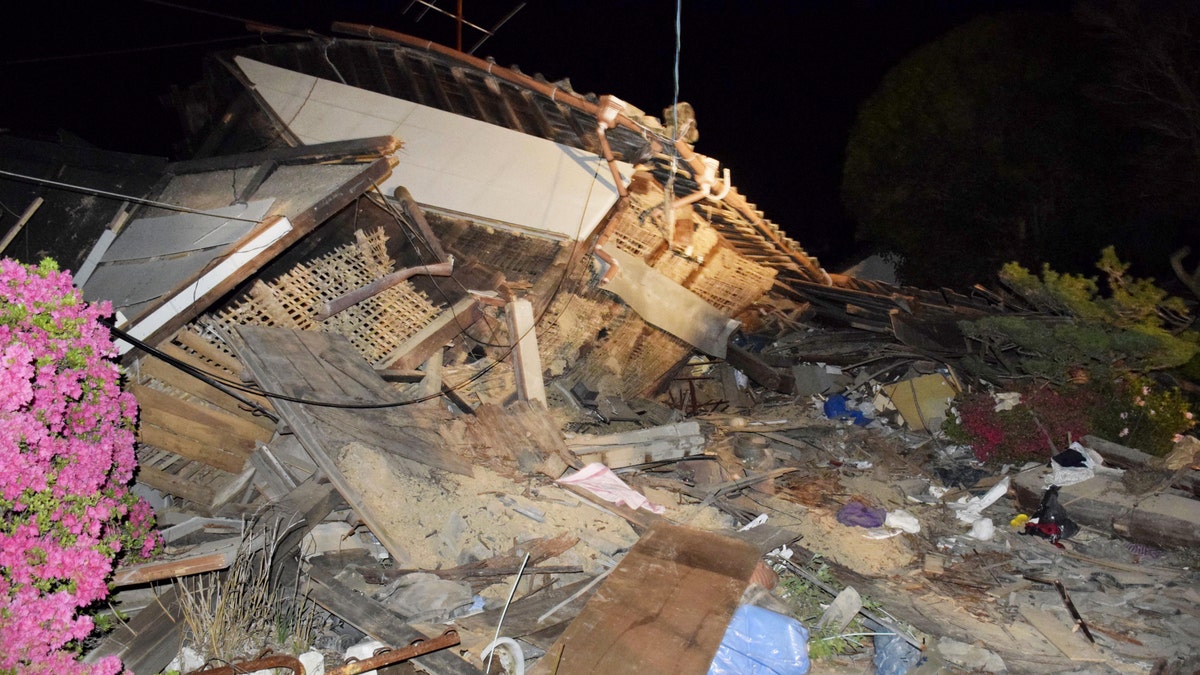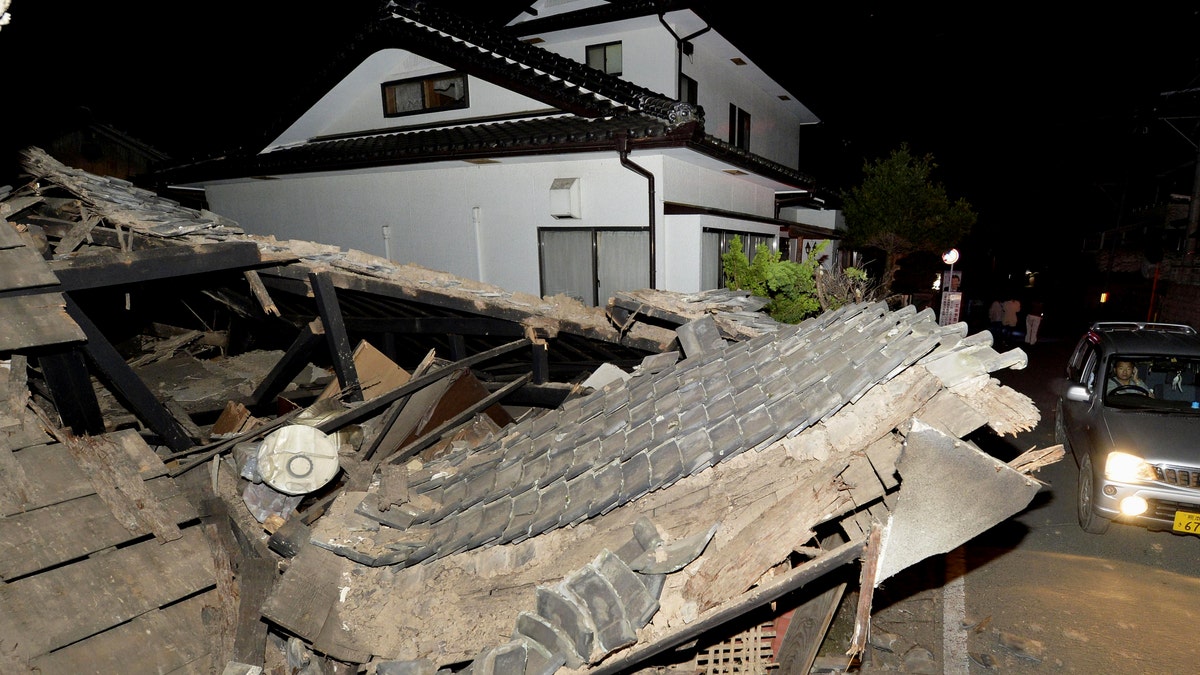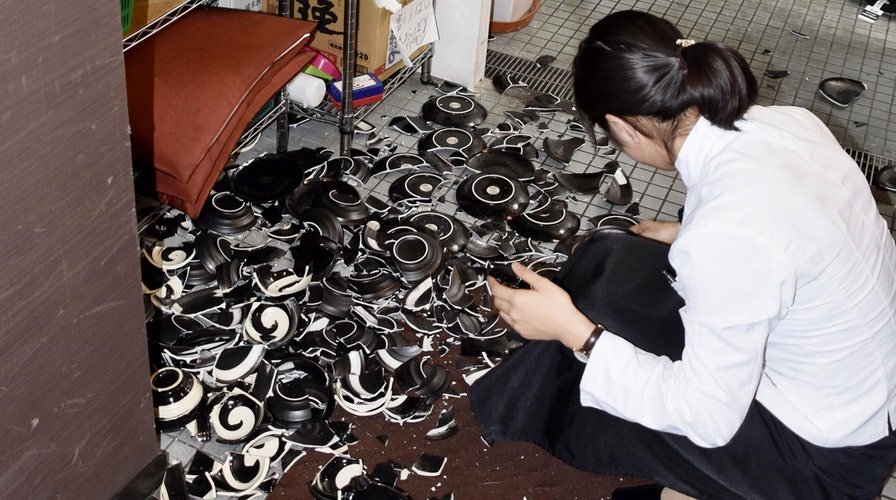Powerful 6.4-magnitude earthquake strikes Japan
Houses knocked over in southern part of country
MASHIKI, Japan – An apparently uninjured baby was miraculously pulled out from underneath the rubble of a collapsed home in Japan early Friday as more than 100 aftershocks from Thursday night's magnitude-6.5 earthquake continued to rattle the region.
Footage broadcast on Japanese television showed the baby wrapped in a blanket and being carried out from the debris.
The quake, which left 9 people dead and around 800 injured, struck the city of Kumamoto on the island of Kyushu, southwest of Tokyo.
A still shocked resident from a town in southern Japan recounted his terror the previous night as he examined the damage Friday.

A collapsed home in Mashiki, southern Japan. (Yuta Iida/Kyodo News via AP)
"It's as if all control was lost, I thought I was going to die and I couldn't bear it any longer," said Yuichiro Yoshikado, who was taking a bath in his apartment in the hardest-hit town of Mashiki, which lies on Kumamoto's eastern border, about 9 miles from the city's center.
"I grabbed onto the sides of the bathtub, but the water in the tub, it was about 70 percent filled with water, was going like this," he said waving his arms, "and all the water splashed out."
Rescue workers on Friday combed through wreckage to make sure there were no more trapped people, said Shotaro Sakamoto, a Kumamoto prefecture official. Concern about aftershocks was keeping many people from starting the huge task of cleaning up, police said.
Yoshikado, whose building was undamaged despite the intense shaking, was checking the damage at his aunt and uncle's home nearby.

A collapsed roof in Mashiki, southern Japan. (Tomoaki Ito/Kyodo News via AP)
Kitchenware was scatted on the floor, and a clock had stopped around 9:26 p.m., the time of the earthquake. Power and water have yet to be restored, and many in the neighborhood have yet to return because of the aftershocks.
"Everyone in Kumamoto is still in a panic," Yoshikado said. "We see in the news phrases like 'Major earthquake in Kumamoto,' or 'The Kumamoto Quake,' but it just doesn't seem real. It feels like something that would happen somewhere else."
About 44,000 people stayed in shelters overnight, and Sakamoto said it was difficult to predict how many would return Friday night.
The dead included five women and four men, the Fire and Disaster Management Agency said. One man was in his 20s, and the rest of the victims ranged from their 50s to one woman in her 90s. Eight of the nine victims were from Mashiki.
There were varying reports on the number of injured. The government's chief spokesman, Yoshihide Suga, said at least 860 people had been injured, 53 seriously. Kumamoto prefecture tallied 784 injured.
Suga said 1,600 soldiers had joined the relief and rescue efforts. TV reports showed troops delivering blankets and adult diapers to those in shelters.
With water service cut off in some areas, residents were hauling water from local offices to their homes to flush toilets.
Suga said there were no abnormalities at nearby nuclear facilities. The epicenter was 74 miles northeast of Kyushu Electric Power Co.'s Sendai nuclear plant, the only one operating in the country.
Most of Japan's nuclear reactors remain offline following the meltdowns at the Tokyo Electric Power Co.'s Fukushima plant in 2011 after a magnitude 9.0 earthquake triggered a huge tsunami.
According to the Japan Meteorological Agency, Mashiki sits near two faults on Kyushu. The area is also near Mount Aso, a huge, active volcano. JMA officials said the quake was unusually strong for Kyushu.
The Associated Press contributed to this report.

